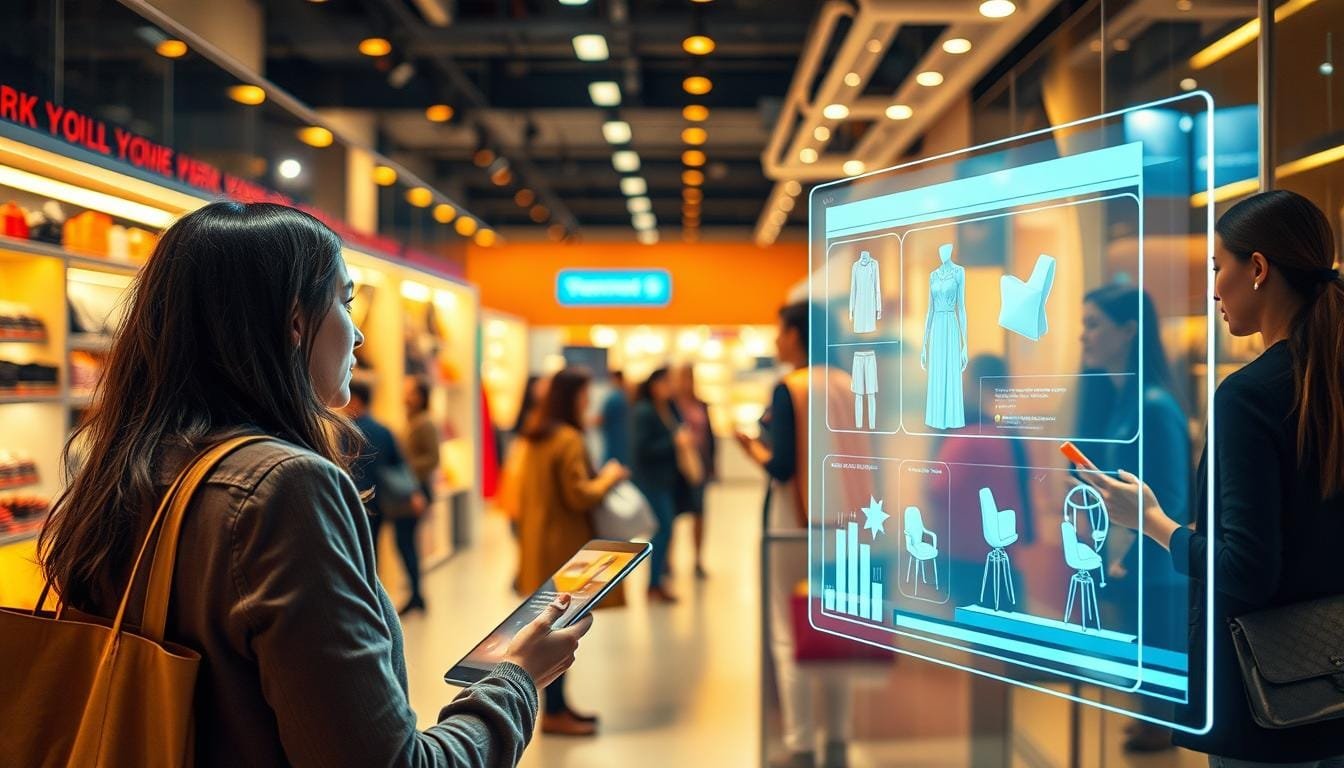What if generic advertising campaigns became obsolete overnight? With 71% of consumers now expecting tailored content, businesses that fail to adapt risk losing relevance in India’s competitive digital landscape.
Modern brands leverage artificial intelligence and real-time analytics to craft unique experiences. Research by Deloitte reveals 90% of individuals find personalised interactions appealing, while McKinsey notes 67% express frustration when brands don’t meet these expectations. The shift from broad demographics to individual preferences isn’t just a trend—it’s a necessity.
Platforms like Bizansy specialise in transforming raw data into actionable insights, enabling businesses to anticipate needs rather than react to past behaviours. This approach drives measurable results: 86% of companies report improved satisfaction and revenue through hyper-personalisation, according to Evergage.
For Indian enterprises, integrating tools such as affiliate platforms for digital products strengthens this strategy. By combining machine learning with cultural nuances, brands create meaningful connections that resonate locally while scaling globally.
The question isn’t whether to adopt these methods—it’s how quickly businesses can implement them before competitors seize the advantage. Are you ready to redefine customer engagement?
Understanding Hyper-Personalization Marketing

How do businesses transform random clicks into meaningful relationships? The answer lies in decoding individual preferences through technology. Unlike basic segmentation, this approach analyses behaviour patterns, purchase history, and even device usage to deliver relevant content.
Definition and Scope
Hyper-personalisation combines real-time insights with predictive modelling. It examines:
- Browsing duration and cart abandonment rates
- Social media engagement patterns
- Location-based service usage
This method builds dynamic profiles that update with each interaction. For example, an Indian e-commerce platform might adjust product suggestions based on regional festivals or weather changes.
Role of AI and Machine Learning
Machine learning algorithms process vast amounts of customer data within milliseconds. They identify hidden trends, like how mobile app users prefer video demos over text descriptions. These systems then trigger personalised offers during peak engagement windows.
Advanced data analytics tools predict future needs while respecting privacy norms. As one tech leader notes:
“The true power lies in anticipating desires before customers articulate them.”
Evolution from Traditional Personalisation

What happens when yesterday’s strategies meet today’s tech demands? Traditional personalisation once revolutionised customer interactions by using names and past purchases. Now, it struggles to keep pace with dynamic consumer expectations.
Shifting from Basic Personalisation
Legacy methods relied on static data like demographics or past purchases. These approaches created generic experiences:
- Email subject lines with first names
- Product suggestions based past browsing history
- Location-specific offers without real-time context
Such tactics often missed crucial behavioural signals. An Indian fashion retailer might recommend winter coats in April simply because someone bought one last December.
Comparative Benefits and Business Impact
Modern strategies analyse real-time actions and environmental factors. McKinsey found businesses using these methods cut acquisition costs by 50% while boosting revenues up to 15%.
Consider streaming platforms suggesting content based past viewing habits and current mood indicators. This goes beyond traditional personalisation’s limited scope.
One Mumbai-based e-commerce brand saw 40% higher conversions after switching to dynamic profiling. As their CX head noted:
“Static data tells half the story. Real-time adaptation completes it.”
Adopting Advanced Personalisation Tools

How can brands turn data chaos into precision? The answer lies in customer data platforms (CDPs) that unify information from websites, apps, and CRM systems. These tools create single customer views, enabling businesses to deliver contextually relevant experiences rather than generic blasts.
Integration of Customer Data Platforms
Modern CDPs consolidate data various sources, including:
- Mobile app engagement metrics
- Offline purchase histories
- Real-time website interactions
For Indian retailers, this means suggesting products based on regional festivals or local weather patterns. Platforms like AI-powered marketing solutions automate this process, turning fragmented inputs into actionable strategies.
Leveraging AI-Driven Insights for Dynamic Recommendations
Artificial intelligence analyses behavioural patterns to generate product recommendations that evolve with each click. Unlike basic filters, these systems consider:
- Time-sensitive purchase intent
- Device-specific browsing habits
- Cross-channel engagement trends
Send time optimisation ensures offers arrive when users are most active. A Mumbai-based beauty brand increased conversions by 33% using geo-fence triggers during monsoon sales. As one analyst notes:
“Static profiles waste opportunities. Dynamic systems rewrite rules hourly.”
Trends and Innovations in 2025

The future of customer engagement lies in algorithms that think faster than consumers. Brands now adapt offers before shoppers finish browsing, using real-time analytics to craft personalised experiences that feel intuitive rather than intrusive.
Real-Time Data Analytics and Dynamic Pricing
Advanced systems process customer actions within 500 milliseconds. This speed lets e-commerce platforms adjust product suggestions based on live cart behaviour or weather changes. For instance, umbrellas might appear prominently on apps when Mumbai’s monsoon alerts trigger.
Dynamic pricing algorithms now consider individual purchase history alongside market demand. Flipkart recently tested models offering exclusive discounts to users who abandon carts frequently. One Bengaluru startup increased conversions by 28% using location-based price variations during office lunch hours.
Edge computing and 5G enable these instant adjustments. Mobile users receive highly relevant offers without latency – crucial for India’s 700 million smartphone owners. As Reliance Jio’s tech lead observes:
“Real-time adaptation isn’t just convenient. It’s what customers now perceive as basic service.”
Predictive tools go further, addressing customer needs before they’re voiced. Streaming services analyse paused scenes to refine recommendations. Food delivery apps suggest meals based on gym app data. This proactive approach builds loyalty while setting new standards for personalised experiences.
Strategies for Crafting Personalised Experiences

Why do some brands feel like they know customers personally? The secret lies in moving beyond age or location data to analyse real-time behaviours and psychological triggers. Modern segmentation treats each interaction as a clue, building dynamic profiles that evolve with every click.
Segmentation Beyond Demographics
Effective strategies prioritise three behavioural layers:
- Purchase patterns: Distinguish between first-time buyers, repeat customers, and high-value spenders
- Engagement metrics: Track email opens, app logins, and content downloads
- Contextual signals: Device usage times, cart abandonment rates, and wishlist activity
An Indian electronics retailer increased repeat sales by 22% after grouping users based on repair service searches and accessory browsing. This approach delivers relevant content matching immediate needs rather than assumptions.
Advanced systems combine these insights with psychographic data like lifestyle values or sustainability preferences. For instance, eco-conscious shoppers might see different product highlights than bargain hunters. As a Myntra strategist notes:
“Static categories create generic experiences. Fluid segments mirror how people actually shop.”
Implement personalised content triggers through automated workflows. Abandoned cart reminders with size-specific suggestions or birthday month discounts demonstrate understanding of unique preferences. Tools like data-driven SEO strategies help balance precision with privacy concerns.
Successful brands update segments weekly, using machine learning to spot emerging patterns. A Mumbai beauty startup reduced unsubscribe rates by 40% after tailoring newsletters to users’ preferred tutorial formats – videos for Gen Z, text guides for older demographics.
Enhancing Customer Engagement and Conversion

Successful brands now treat every click as a conversation starter. They use behavioural patterns to deliver timely, relevant interactions that feel natural rather than scripted. This approach turns casual browsers into loyal advocates while boosting measurable outcomes.
Omnichannel Engagement and Behavioural Triggers
Consistency across platforms builds trust. Indian consumers expect seamless transitions between:
- WhatsApp order updates and in-store pickup options
- App-based loyalty programmes and website checkout processes
- Social media queries and email support channels
A clothing brand increased conversion rates by 19% after syncing abandoned cart data with SMS reminders offering size-specific suggestions. Tools like ConvertKit vs ClickFunnels help automate these workflows while maintaining personalisation.
Behavioural triggers work best when timed to emotional decision points. For example:
- Sending monsoon footwear offers when users check weather apps
- Recommending lunch combos during typical office break hours
- Triggering payment failure assistance within 90 seconds
One Mumbai retailer reduced cart abandonment by 33% using real-time browser exit pop-ups with personalised discounts. As a Myntra strategist notes:
“Seamless experiences make customers feel recognised, not tracked.”
Prioritise customer experience enhancements that address specific pain points. Analyse journey maps to identify where personalised nudges could smoothen transitions from consideration to purchase.
Ethical Considerations and Data Security

How can businesses balance tailored experiences with ironclad privacy? As companies collect vast amounts of browsing history and purchase data, transparency becomes non-negotiable. A 2024 KPMG study found 68% of Indian consumers worry about data misuse despite wanting enhanced customer experiences.
Regulatory Compliance and Transparent Data Practices
Modern strategies require stricter safeguards than traditional personalisation methods. India’s Digital Personal Data Protection Act (2023) mandates explicit consent for data usage. Brands must now:
- Explain how browsing history informs recommendations
- Offer granular opt-out controls for specific data categories
- Conduct annual third-party security audits
Privacy-by-design systems anonymise data before analysis. For example, Flipkart’s latest algorithms process location trends rather than individual coordinates. As a Reliance Retail data officer states:
“Customers accept data collection when they see tangible benefits – but only if we’re crystal clear about usage.”
Forward-thinking companies publish simplified privacy policies using visual flowcharts. Others implement just-in-time notifications explaining why specific data points are requested during checkout processes. These measures build trust while maintaining traditional personalisation’s effectiveness.
Conclusion
The race for customer attention has entered its final lap. Brands now craft highly relevant experiences using data analytics that analyse browsing history and predict customer needs. This shift moves beyond campaigns based past purchases, instead creating dynamic interactions that make customers feel genuinely understood.
Indian businesses leveraging these strategies see tangible results: 28% higher conversion rates and 40% improved loyalty in recent case studies. Tools like ClickFunnels help optimise sales processes while delivering personalised content. These systems turn vast amounts of data into actionable insights, proving benefits hyper-personalization brings to modern marketing efforts.
Looking ahead, ethical data practices will define success. Transparent systems that balance enhanced customer experiences with privacy concerns will outperform competitors. Brands mastering this equilibrium while using analytics create products based on real-time behaviour will dominate India’s digital marketplace.
The future belongs to businesses treating each interaction as unique. Those investing in customer engagement through relevant content and adaptive strategies will secure lasting relationships – and revenue growth – in 2025’s personalised economy.











